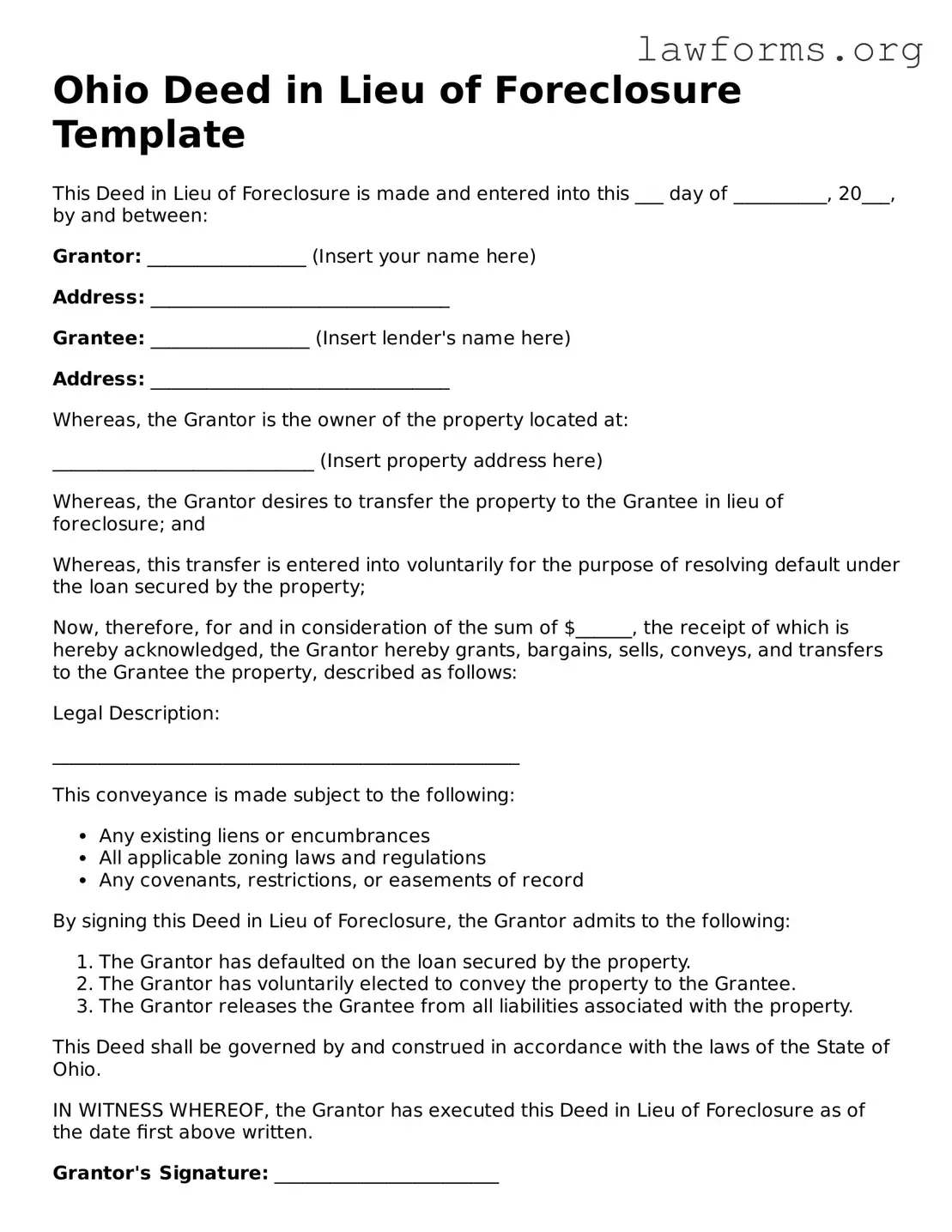Ohio Deed in Lieu of Foreclosure Template
This Deed in Lieu of Foreclosure is made and entered into this ___ day of __________, 20___, by and between:
Grantor: _________________ (Insert your name here)
Address: ________________________________
Grantee: _________________ (Insert lender's name here)
Address: ________________________________
Whereas, the Grantor is the owner of the property located at:
____________________________ (Insert property address here)
Whereas, the Grantor desires to transfer the property to the Grantee in lieu of foreclosure; and
Whereas, this transfer is entered into voluntarily for the purpose of resolving default under the loan secured by the property;
Now, therefore, for and in consideration of the sum of $______, the receipt of which is hereby acknowledged, the Grantor hereby grants, bargains, sells, conveys, and transfers to the Grantee the property, described as follows:
Legal Description:
__________________________________________________
This conveyance is made subject to the following:
- Any existing liens or encumbrances
- All applicable zoning laws and regulations
- Any covenants, restrictions, or easements of record
By signing this Deed in Lieu of Foreclosure, the Grantor admits to the following:
- The Grantor has defaulted on the loan secured by the property.
- The Grantor has voluntarily elected to convey the property to the Grantee.
- The Grantor releases the Grantee from all liabilities associated with the property.
This Deed shall be governed by and construed in accordance with the laws of the State of Ohio.
IN WITNESS WHEREOF, the Grantor has executed this Deed in Lieu of Foreclosure as of the date first above written.
Grantor's Signature: ________________________
Print Name: ________________________
State of Ohio
County of _______________
On this ___ day of __________, 20___, before me, a Notary Public, personally appeared ________________________ (Grantor’s name) and acknowledged the execution of this instrument.
Witness my hand and official seal.
Notary Public Signature: ________________________
My Commission Expires: ________________________
